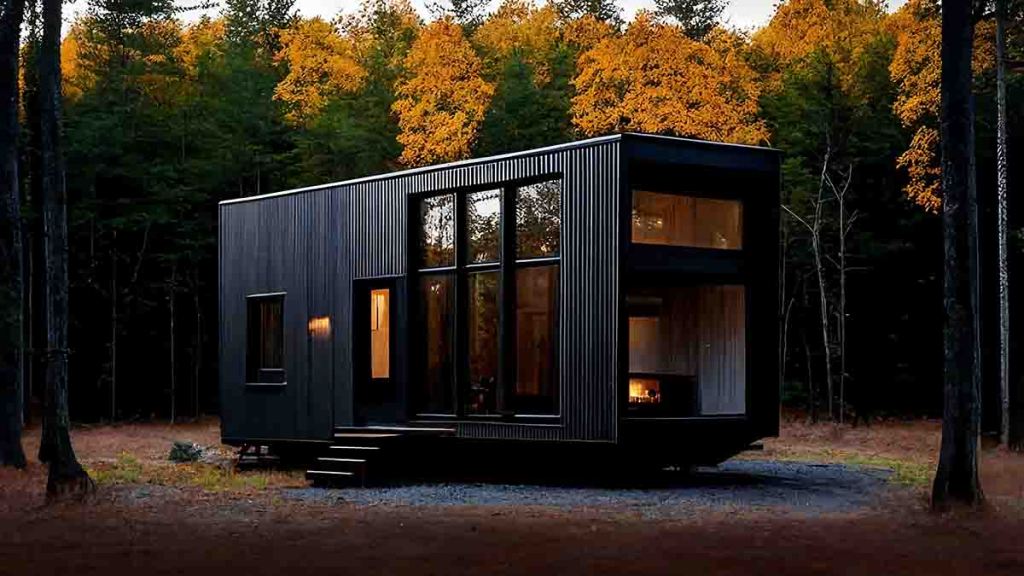Accessory dwelling units, or ADUs, saw a surge in popularity during the pandemic, when rock-bottom interest rates stoked the skyrocketing interest in adding elbow room for everything from home offices to fully appointed living spaces.
But the pandemic is now over and interest rates are way up. So, what’s happening with ADUs now? The short answer: a lot. But the landscape is changing, and ADU buyers (and ADU builders and makers) are adapting to it. Here are a few of the key trends we’ve been watching.
Customers are interested in going bigger
ADUs still max out at about 1,000 square feet, so “big” is, as always, a relative term. The interest in the smaller structures that were hot sellers during the pandemic has ceded ground to a surge in inquiries about ADUs with bathrooms, kitchenettes and the full suite of HVAC, plumbing, and electrical service.
Increasing costs associated with higher interest rates are, however, tapping the brakes on conversions to sales of these full-featured ADUs, and that’s understandable. In early 2022, people were locking into 3% and 4% interest rates. Now those numbers are more like 8% or 9%.
For a fully appointed, $240,000 ADU, a 30-year loan with an 8% interest rate costs over $600 more per month compared to the same loan with a 4% rate. The sharper focus on cost is now boosting interest in modular factory-built ADUs, which tend to be less expensive and faster to build than custom onsite construction.
Still, an ADU is a big investment, and potential customers are thinking harder before pulling the trigger. All that said, ADUs still pay off for many homeowners – it just depends on the ROI of a specific project.
ROIs are tough to calculate, but there are rules of thumb
Look around the web and you’ll find that ROI estimates (and rules of thumb to help estimate ROI) for ADUs are all over the place.
A Porch.com study found that homes with ADUs are, on average, priced about 35% higher than those without ADUs. Homelight surveyed real estate agents who found ADU ROIs to be neutral to negative, depending on the location. Assuming the ADU is a full-time rental, Symbium estimates that the ADU owner’s property value will increase by 100 times the monthly rent on the ADU.
While many customers are interested in adding an ADU for full-time rental, most seem keen on developing a flexible space for personal use as private, detached quarters for visitors and a short-term rental when it’s convenient for them.
The majority don’t plan to rent out their ADUs full-time, so let’s use the ADU cost as a foundation for estimating return.
All-in, ADUs typically cost about $400 per square foot – and that includes site work, the foundation, utility hookups, and so on, according to our estimates. We’ve also found that, in the eyes of real estate markets, a detached ADU’s floor space adds to the total square footage of the main dwelling. We’re also seeing the greatest interest in ADUs in neighborhoods with real estate values in the $600 to $800 per square foot range.
So from the narrow perspective of short-term real estate valuation (that is, excluding potential rental income), you’re looking at 1.5x or better ROI in those markets. Conversely, if you live where real estate goes for less than $400 a square foot, you may see a flat to negative ROI.
Permitting is getting easier, but there’s progress to be made
City leaders are now familiar with ADUs’ potential to address a longstanding, stubborn nationwide urban housing shortage – particularly when it comes to affordable housing. The list of urban centers that have embraced or are in the process of embracing ADUs is long and growing (see Denver, Austin, Los Angeles, and Seattle as examples).
In broad geographic terms, ADU hotbeds, such as California and the Pacific Northwest, are being joined Colorado, the metropolitan Washington, D.C. area, North Carolina, and Georgia. More liberal ADU zoning is playing a role in all of these places.
Zoning is, as a national trend, liberalizing, with housing-starved cities leading the way. But cities consist of neighborhoods, and the acceptance of ADUs can boil down to a neighborhood’s or homeowners association’s delineation of parking, setbacks, and other requirements.
The often hyperlocal nature of ADU permitting can act as a deterrent to potential ADU buyers, who lack the expertise (or the time and energy) to navigate the regulatory maze. ADU builders are stepping into the void as part of another trend.
ADU builders are working toward a turnkey vision.
To build an ADU is to build a small house. That involves permitting, financing, and managing all the details related to the physical infrastructure: surveying, grading, foundation work, tying in electrical and plumbing lines, and so on. There are many moving parts.
Most people interested in building ADUs have jobs to be able to afford them. However, they’ve got limited time to digest and work the details.
Leading ADU builders are establishing in-house teams and networks of external partners to help customers get ADUs built with minimal time and effort. That includes offering competitive financing, tracking the vagaries of local permitting and then helping customers through the permitting process. And, in the case of manufactured ADUs, the teams are vetting local contractors and packaging third-party bids for onsite work. The vision is to offer customers a hassle-free (or at least minimal-hassle), turnkey ADU-construction process.
That vision is still under construction, so to speak. But for homeowners and the cities and towns they live in to reap the many rewards that ADUs promise, it’s one well worth pursuing.
Jeremy Nova is the founder of Studio Shed.
This column does not necessarily reflect the opinion of HousingWire’s editorial department and its owners.
To contact the editor: sarah@hwmedia.com






